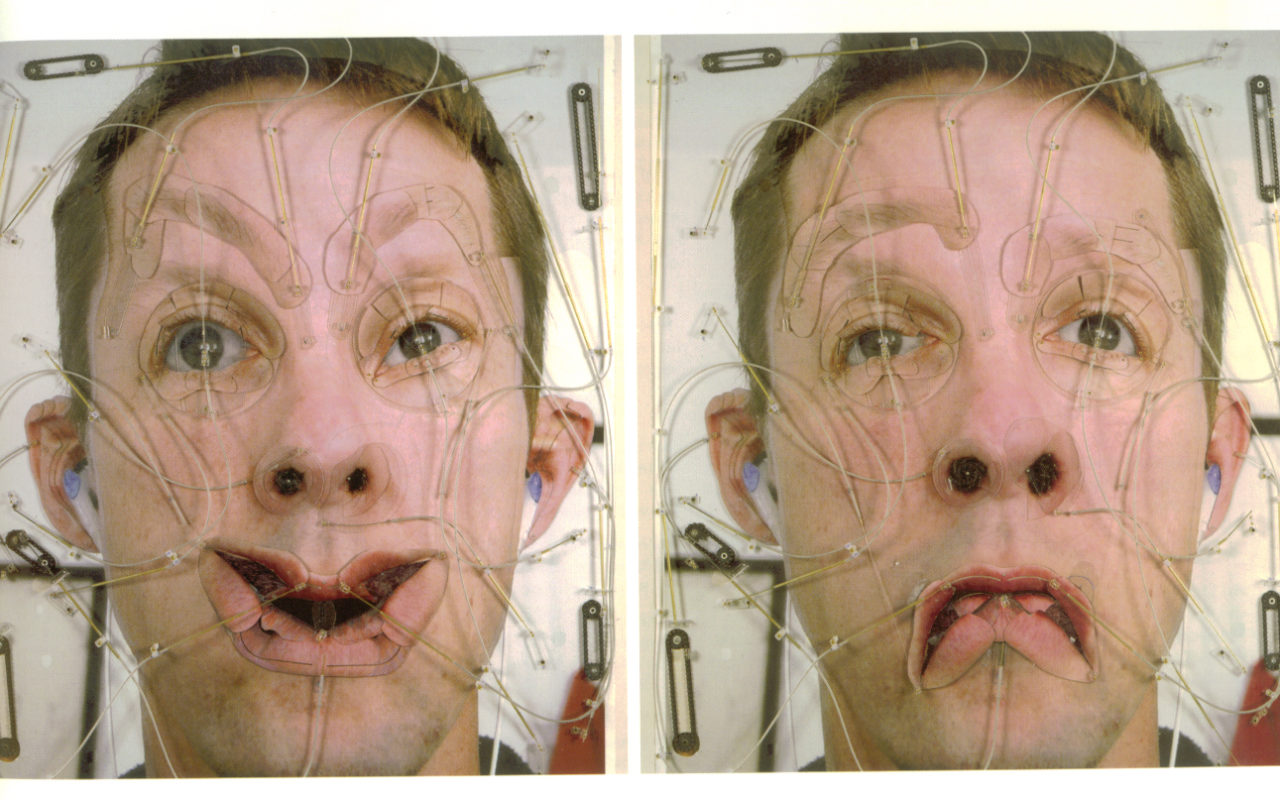
The Art Makerspace — An Action Research Plan
Artists have always pushed the envelope with technology. Cave artists experimented with natural pigments to create beautifully colored paintings on rocks. Leonardo diVinci used art to record his ideas for inventions that were beyond what could actually have been built at the time he invented them. Artists like Tim Hawkinson,Krzysztof Wodiczko, and Jenny Holzer use technology to create art installations that interact with the environment around them, spotlighting the connection between humans and tech. One of my favorites is Tim Hawkinson’s “Emotor” installation, in which a giant face — his own face, reproduced in large, moveable pieces, — reacted to a television screen through light-sensing diodes. You can check it out here:
Unfortunately, when it comes to technology integration, arts classrooms tend to get left out. My innovation plan is to put more technology into the art classroom through an art makerspace in my school, thus giving more tools to students for creating art, but also allowing them to better understand core subject learning (especially STEAM) through creating art.
My fundamental research question is “how will an art makerspace promote deeper core subject learning in a school?” I think I will use a mixture of qualitative and quantitative data. I think that my quantitative data will come from the actual results of time spent in the makerspaces — the projects, themselves and demonstration of learning objective understanding. I would also use qualitative data from student reflection pieces and artistic statements, because sometimes understanding isn’t as evident in the work as it is in the process of doing the work. I will need to look ahead in my research to ensure that the data I collect throughout the project will ensure that I get the information I need later on to ensure that I understand whether the project is working or not.
The focus of my literature review is on makerspaces in school and public library settings, but also I will be looking at some makerspaces in art programs, as well as some choice-based art programs such as TAB-Choice and Montessori that work sort of like makerspaces by allowing students to choose how and what they want to create to demonstrate their understanding of a concept. I have found some great crossovers between the makerspace movement and choice-based art programs, and right in the middle there are some cool teachers like Tim Needles who have amazing art makerspace programs. I am looking for connections between making and deeper understanding.
The most appropriate type of data to collect will be qualitative, although I will need to have some quantitative data, as well. There will be two measurable data sets. One will be a student survey and the second will be a teacher analysis of students use of core subject matter within the artworks. The student evaluations will provide anecdotes and qualitative data that can be compared to the teacher analysis and qualitative data in each student’s project evaluation. Both the student and teacher evaluations will ask students and teachers to quantify the amount of core subject understanding that occurred during the ideation and creation of the artwork.
Part of the problem, though, is that I am moving to an entirely new school, and a lot of what i will be doing is still unclear. I do know that students will have access to the makerspace in my art classroom, but they will also have additional time to come in during what’s called a “personalization time,” where students can visit any teacher they want to work on whatever they need. I know we have limited access to devices (!!!) and I am going to try and get some iPads so I can implement the digital framework the way I wanted to, but that I may need to find other ways to collect student data. I also don’t know what the expectations are for me as a teacher — for example, I was given a form to fill out for my fall exam, but I have traditionally done a portfolio review in place of a written exam for my high school courses, so I may need to restructure how I want to assess student progress. Whatever I do, I want my innovation plan and the structure of my course to fit together so that I’m not chasing a whole bunch of different kinds of data around and get distracted when the demand for data in one or the other area ramps up (like when grades are due.) I really want to make it all fit together elegantly.
Photo/Video Credits: Tim Hawkinson, PBS Art:21